|
A Virtual Walk Through Jacksonville History
Stop 11: Thomas Kenney House
While we make our way to our next stop, let’s talk a bit about the family who made their home there.
Daniel Moe Kenney arrived Jacksonville in early 1852. Shortly thereafter, James Clugage , one of the town’s founders, gave Kenney the lot on the northeast corner of California and Oregon Streets, where Kenney opened the town’s first store with a man named Appler. It maintained a minimal stock of tools, clothing and tobacco, and a liberal supply of whiskey per A.G. Walling’s History of Southern Oregon—“not royal nectar, perhaps, but nevertheless the solace of the miner in heat and cold, in prosperity or in adversity.”
In 1855, Daniel married Elizabeth T’Vault. While the marriage was short-lived (Daniel died in 1860), they had three children, two boys and a girl. Thomas Joseph, the oldest son, was born in Jacksonville in December 1855. Given that his father had died when he was only five, Tom Kenney was essentially a self-made man. He went to work in a livery stable as a “chore boy” at the tender age of eight, and two years later he began an apprenticeship as a harness maker. At age 25, Tom borrowed enough money to open his own saddlery and harness business.
In 1878, Tom married Rosetta Ulrich, and it is their home we’ll be talking about at this stop.
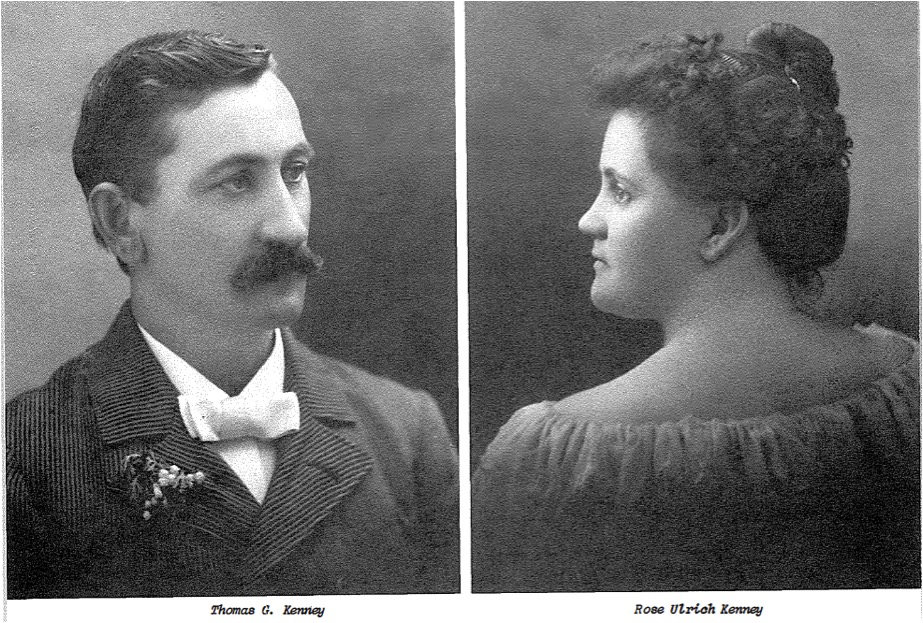 Photo Credit: SOHS Photo Credit: SOHS
The Thomas Kenney house on the corner of North Fourth and East D Streets is a two-story wood frame structure, built around 1898. It has predominantly Queen Anne features, and was purportedly designed by Fred Weeks of Medford. It was built by Art Nicholson for a reported cost of less than $1,400. The original structure consisted of 11 rooms, “equipped with all modern improvements and surrounded by a beautiful lawn rendering it one of the most attractive estates in the vicinity.”
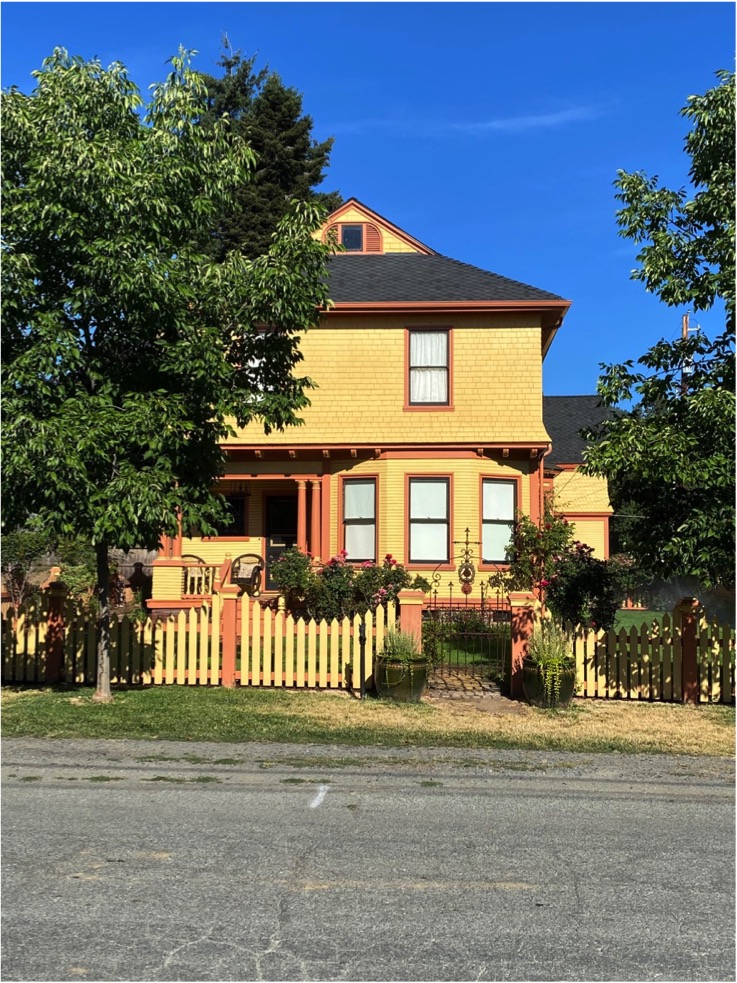 Photo credit: Carolyn Embry Photo credit: Carolyn Embry
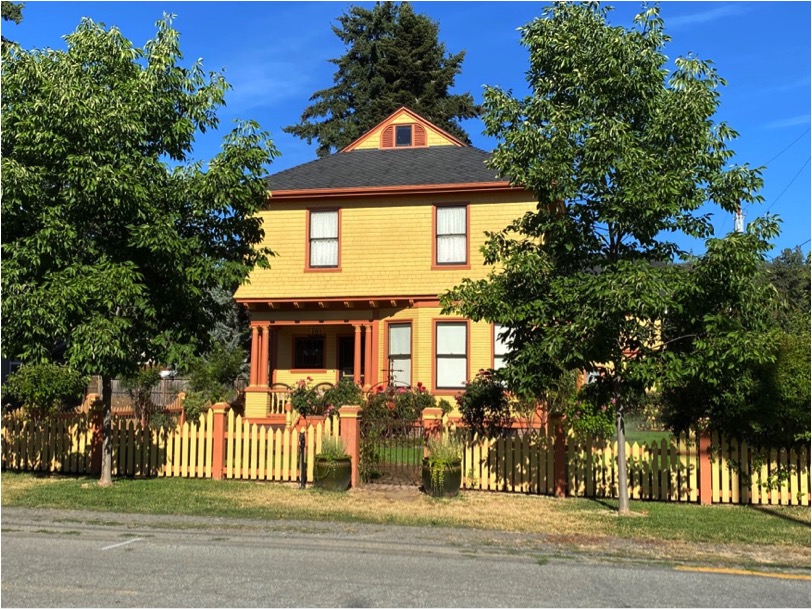 Photo credit: Carolyn Embry Photo credit: Carolyn Embry
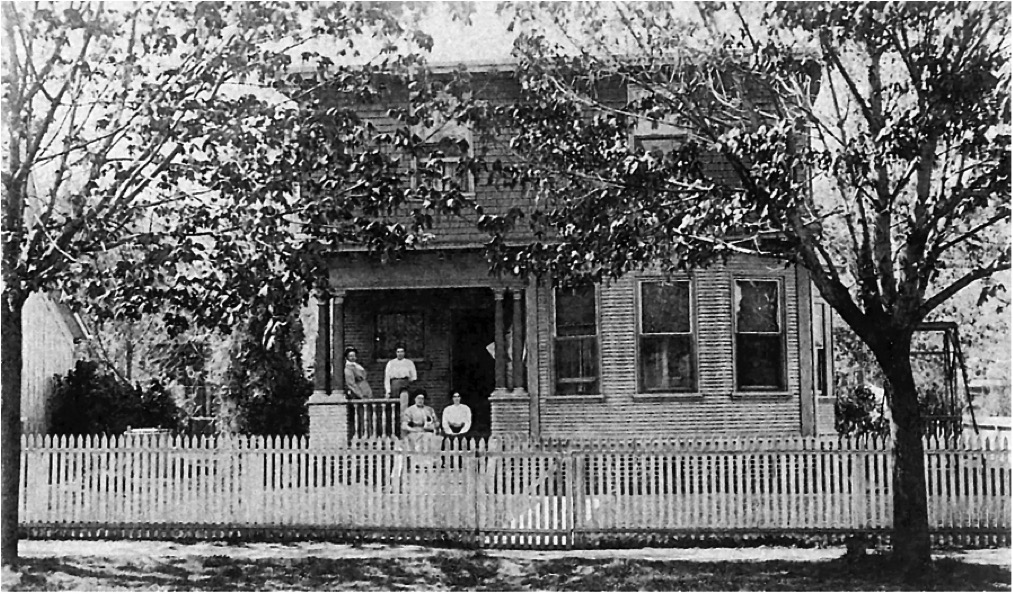 Photo Credit: SOHS Photo Credit: SOHS
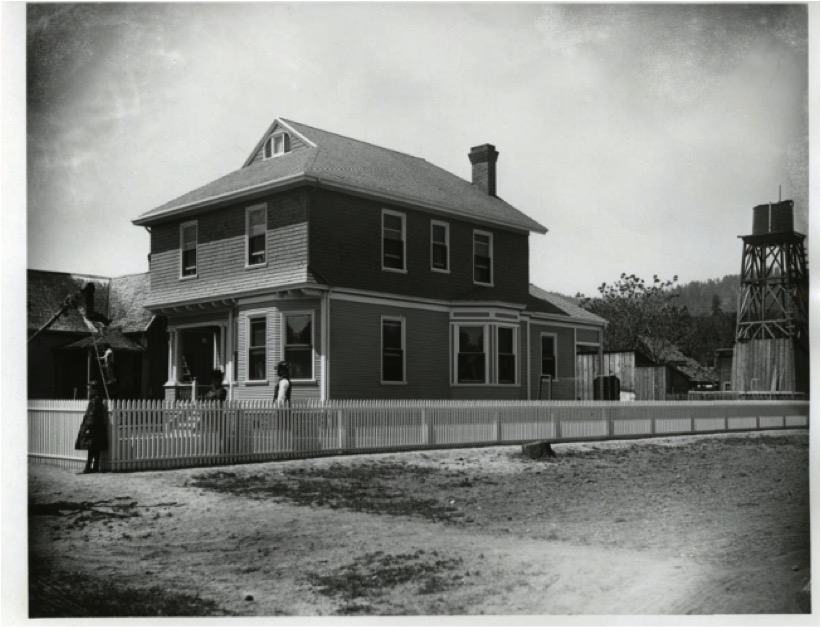 Photo Credit: SOHS 29885.1 Photo Credit: SOHS 29885.1
Tom Kenney had purchased the lot in 1886. At that time, a one-story dwelling built in the 1850’s or 1860’s occupied the corner. Tom and his family may have lived in that dwelling for the twelve years prior to the construction of the current home.
Tom and Rose had six children, three of whom, Emma, Christian and Frances, grew to maturity. His son Christian (Chris) recalled that his father also dealt in furs and had rented space in the Masonic Hall on California and Oregon Streets, “filled to the roof” with furs, hides and pelts.
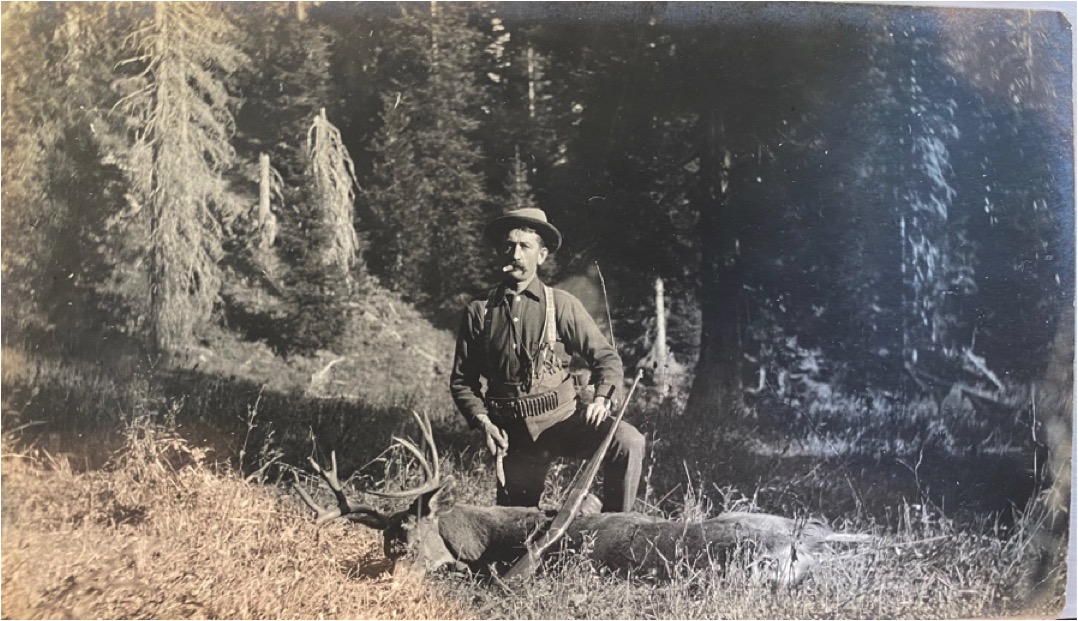 Thomas Kenney on a deer hunting trip. Photo credit: SOHS 2014.66.2.9 Thomas Kenney on a deer hunting trip. Photo credit: SOHS 2014.66.2.9
In August of 1899, the Democratic Times reported that the Kenney barn, situated on D Street between Third and Fourth Streets burned to the ground, together with the three wagons inside it. Elizabeth T’Vault Kenney’s home, apparently located in the same block, was also destroyed along with a warehouse building used by White and Jacobs, adjoining hay scales, and the Boschey barn. The paper reported that the fire was “incendiary” in origin.
In 1900, the Kenney house was plumbed by H.G. Nicholson. A local newspaper proclaimed “This new home of one of Jacksonville’s capitalists and hustling business men [sic], is one of the finest in that burg of beautiful homes, and Tom has good reasons for throwing bouquets at himself because that [sic] he possesses it.” (So much for newspaper editing.)
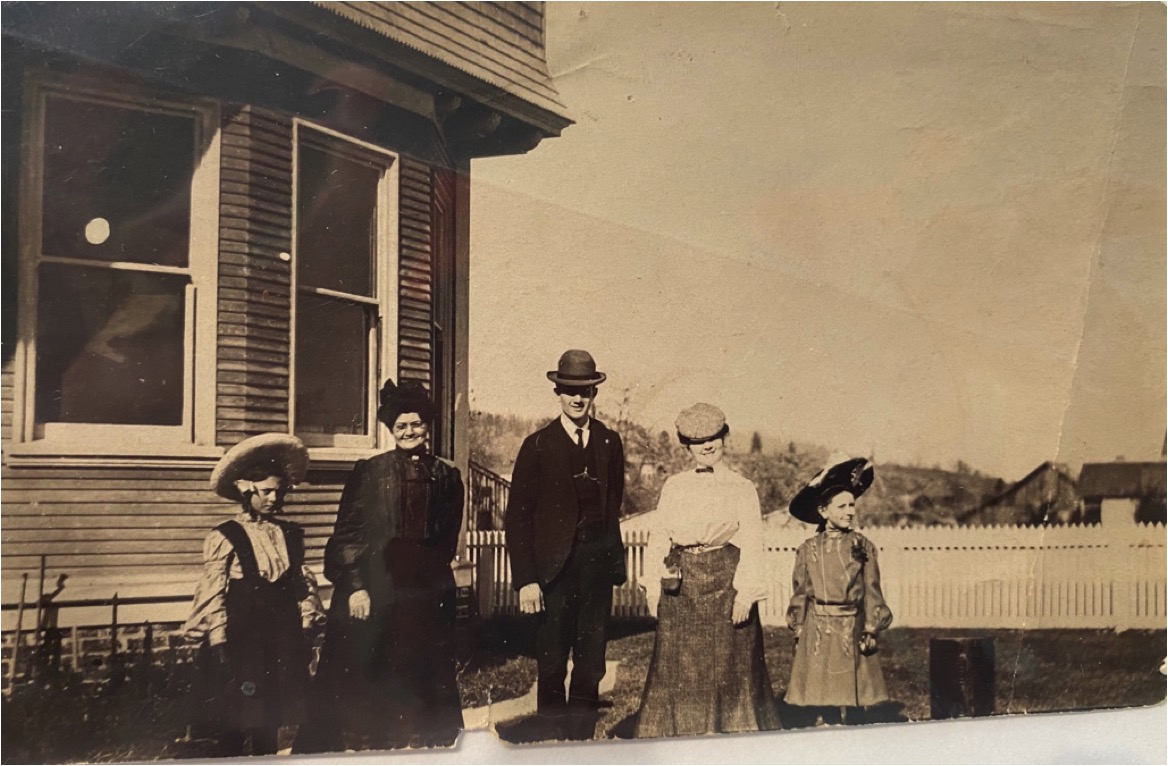 Emma Kenney, Elizabeth T’Vault Kenney, Thomas Kenney, Rosa Kenney, and Frances Kenney near their home. Emma Kenney, Elizabeth T’Vault Kenney, Thomas Kenney, Rosa Kenney, and Frances Kenney near their home.
What might be the Karewski/Applebaker barn can be seen in the background. Photo credit: SOHS 8619.
In 1906, Tom opened a hardware and grocery business in the oldest portion of what is now the Bella Union Restaurant and Saloon at 170 West California Street. It was a fitting place for Tom to locate his hardware and grocery business, one building away from where his father Daniel opened Jacksonville’s very first business. The block was still known as “the old
Appler & Kenney corner” and Tom ensure it remained the “Kenney corner”—he owned the entire business block.
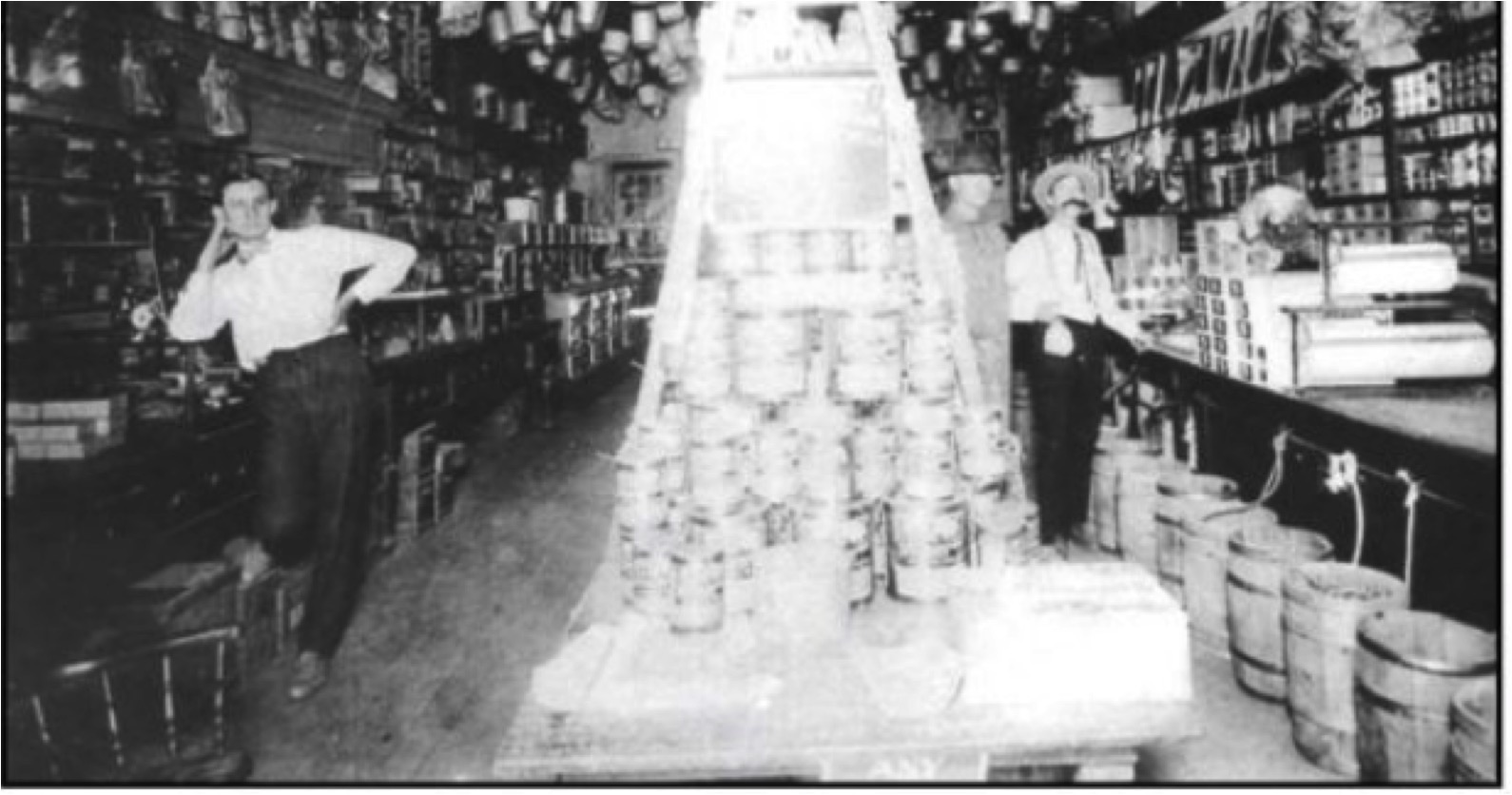 Photo credit: SOHS. Thomas and Rosa’s son, Christian Kenney, is pictured at left. Photo credit: SOHS. Thomas and Rosa’s son, Christian Kenney, is pictured at left.
Tom accumulated considerable property. In addition to his business block and the two lots where his house was situated, he owned a half interest in a 160-acre mountain ranch at Butte Creek; he owned a 160-acre ranch on Williams Creek devoted to raising grain and alfalfa; and he was a stockholder and treasurer of the Jacksonville Mining and Milling Company.
Kenney also served on the Jacksonville City Council for several terms and served as both member and chairman of the school board. He was active in fraternal organizations, including the Roseburg Lodge No. 326 of the Benevolent Protective Order of Elks, Jacksonville’s Banner Lodge No 23 of the Ancient Order of United Workmen, the Jacksonville Assembly No 60 of Artisans, and Jacksonville’s P.P. Prim Cabin of the Native Sons of Oregon.
Thomas Joseph Kenney died in a local hospital on December 15, 1946, at the age of 90. Rose predeceased him on June 2, 1942, at the age of 82. They are both buried in the IOOF section of the Jacksonville Cemetery. Thomas’s parents, Daniel and Elizabeth are buried in the City Section of the Jacksonville Cemetery.
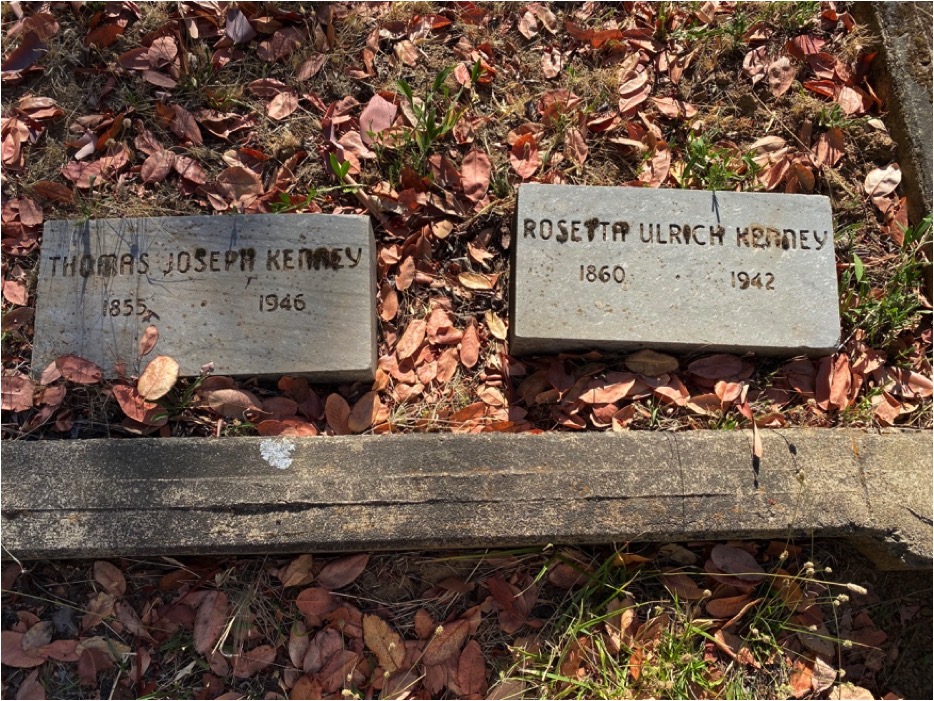 Photo credit: Carolyn Embry Photo credit: Carolyn Embry
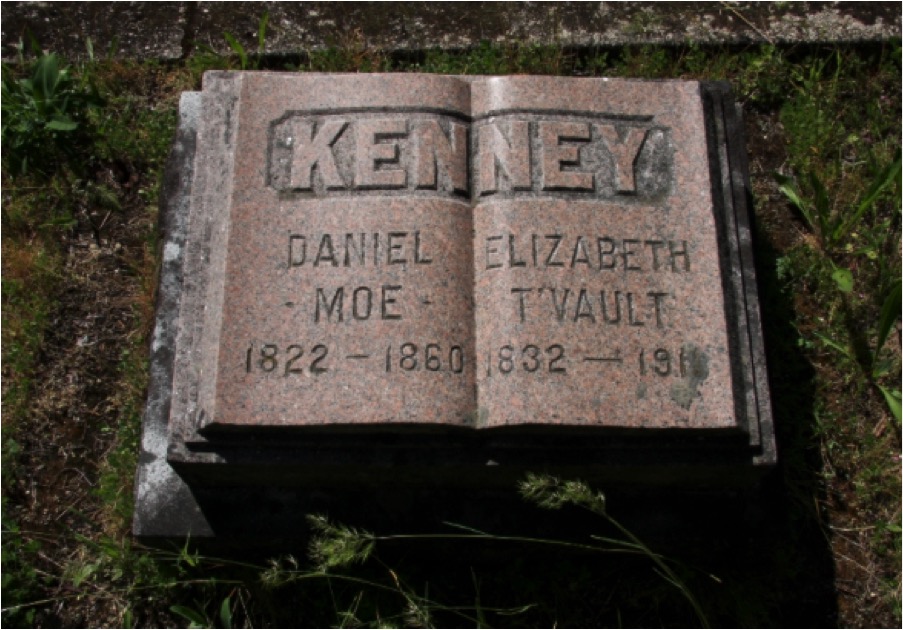 Photo credit: John McGlothlin Photo credit: John McGlothlin
Please join us next week as we continue our virtual walk through Jacksonville’s history.
Sources and References:
D.M. Kenney letter to “Friend Richard,” undated but prior to Cram & Rogers business failure I 1856; Mss 1500, folder 3/84, Oregon Historical Society Research Library
Historic American Buildings Survey, HABS No. ORE-76, Fisher Brothers Store and Bella Union Saloon.
Table Rock Sentinel, June 1985.
Portrait and Biographical Record of Western Oregon. Chapman Publ. Co., 1904.
State of Oregon Inventory of Historic Properties, “Kenney House,” Evans, Gail E.H., February 1980.
“A Fire in Jacksonville.” Democratic Times, 7 Aug. 1899, pp. 3–3 (Notes by Gail E.H. Evans, August 15, 1980).
“City Happenings.” Medford Mail, 16 Feb. 1900.
|